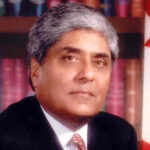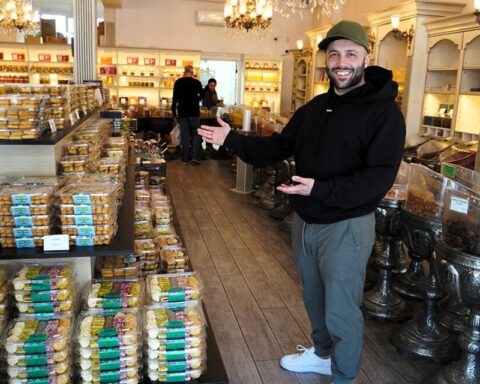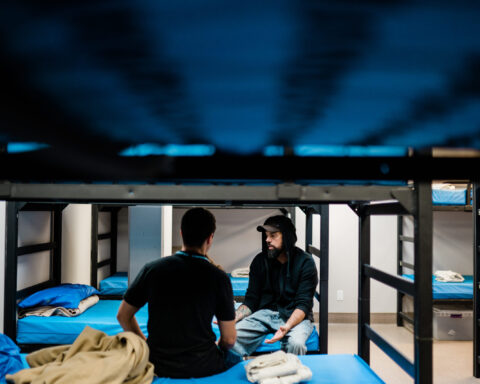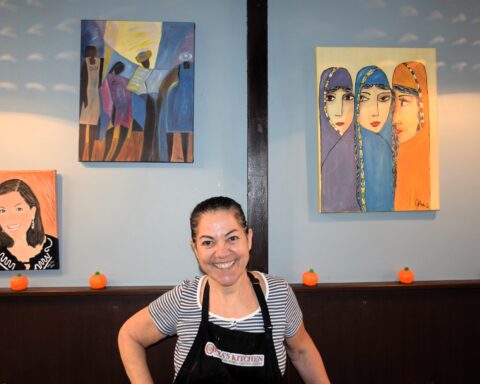Come August 14 and 15, some in the Pakistani and Indian-origin Canadian communities will fly flags and sing national anthems to celebrate independence days of their respective former home lands – ironically, the very countries they left voluntarily to enjoy the Canadian way of life. (A big Indian parade was held in Toronto last weekend.)
The display of flags originated on battlefields to identify warring factions. Though national flags have come a long way from serving this purpose, they are still a potent political symbol of nationalism.
The national anthem, while evoking emotional sentiments, also sings praises of a country. What fascinates and baffles me is that many of these immigrants were not brought here under duress or against their will, but felt strongly about leaving their homelands and heading here of their own accord.
Celebrating St. Patrick’s Day, Vaisakhi or Caribana are cultural and religious – not political – events, devoid of evoking dual political loyalty.
Loyalty is the key word here. Singing national anthems and saluting flags of former homelands evokes images of dual loyalty and patriotism.
However, it is not as offensive to see Canadians of Italian or Chilean origins run around waving Italian or Chilean flags during a soccer World Cup match.
Political loyalty
Fortunately, in today’s multicultural Canada, one enjoys the luxury and liberty to speak in one’s mother tongue, eat one’s ethnic cuisine, dress in one’s national attire and partake in numerous cultural events. All that the new country expects is that political loyalty be to one flag and one national anthem – that of the adopted country, in this case Canada.
Enjoy your emotional attachment indoors, but do not display it in public.
The problem of divided loyalties has its roots in Canada’s British political class. Canada’s two political tribes – English and French – imported their historic political and cultural rivalries to the new country, with no regard for the existing Indigenous Peoples.
As a result of English-French battles in the new country, the victorious British-designated Union Jack, flag of the United Kingdom, was adopted as the new Canadian flag. It flew across the country, with no regard to the feelings of French-origin Canadians.
That lasted until the current Maple Leaf was adopted as the official flag in 1965.
Crass vote-getting
Foreign diplomatic missions fly their flags on their office buildings and residences. Foreign national days are celebrated with receptions, hosted by diplomatic missions, on embassy premises or in hotels. Canadians, at large, and those with roots in those countries are invited and appropriately attend these events.
However, it is inappropriate for Canadians to involve themselves in hosting or organizing events to celebrate national days of their former homelands. In 2013, one foreign mission – the Indian Consulate General, in Toronto – went so far as to “sponsor” a public event for Indian diaspora, the “India Day Festival and Grand Parade”, to mark India’s Independence Day. (A similar event was repeated this year.)
In the 1990’s, Ottawa’s then mayor began flying the flag of each country that had diplomatic relations with Canada, on their respective national days, at City Hall. He would invite Ottawa residents who were part of that country’s diaspora in the capital city to mark the national day of their former homelands.
Unfortunately, this was no more than a crass vote-getting tactic. It eventually backfired, when in September 2014, Vietnamese Canadians held a large protest against flying the flag of Communist Vietnam – the very regime they fled to seek refuge in Canada.
Reasonable expectation
Some may wonder, “What’s in a flag”?
Well, after the close defeat of the 1995 referendum on Quebec’s desire to separate from Canada, then Deputy Prime Minister and Heritage Minister Sheila Copps, decreed that all Canadian federal government buildings across Canada should fly the Maple Leaf, as a public symbol of federal government presence.
Canada, is a relatively young country, engaged in building Canadian institutions. What Canadians need to do is to effectively contribute to these efforts and desist from displays of split loyalty and patriotism.
As at the Olympic Games, one can stand under only one flag and sing only one national anthem. Hence, the only flag that we need to fly is the Maple Leaf, sing “O Canada”, and the only National Day that we need to celebrate is July 1, when in 1867 Canada became a unified country.
It is the least one can expect in return for what Canada offers.
Bhupinder S. Liddar is a retired Canadian diplomat and former editor & publisher of “Diplomat & International Canada” magazine. He can be reached at [email protected].
Bhupinder S. Liddar is a retired Canadian diplomat and former publisher-editor of “Diplomat & International Canada” magazine and can be reached at www.liddar.ca. He is also a member of the NCM Collective.





